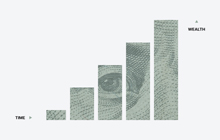Canada's top CEOs make 210 times more than the average worker

Capping the stock option tax deducation is a a decisive shift away from stock options as a means of compensation but the overall salary gap remains high
TORONTO, January 2, 2025 – Canada’s 100 richest CEOs made 210 times more than the average worker in 2023, a new report by the Canadian Centre for Policy Alternatives (CCPA) reveals.
By 10:54 a.m. Thursday, the first official work day of the New Year, these CEOs will have already made, on average, $62,661 — as much as the average worker makes in a whole year.
The top 100 includes more than a dozen fossil fuel CEOs. Suncor CEO Rich Kruger was the third-highest paid CEO on the list with $36,846,735 in total compensation. The number-one spot went to Patrick Dovigi, CEO of GFL Environmental Inc. with $68,464,987. Second place is Restaurant Brands International Inc. Joshua Kobza at $39,097,490.
CCPA has been tracking CEO pay since 2007 and said 2023 was the third-largest haul on record, at $13.2 million average compensation per CEO. However, the highest paying years for CEOs are still 2021 and 2022 when compensation averaged $14 million.
The gap closed slightly in 2023 because worker wages went up a little and inflation calmed down, but CEO compensation levels are still well above prepandemic highs, according to the report, published Jan. 2.
“A tear will be shed in the boardrooms across Canada that inflation now seems to be over,” David Macdonald, author of the report and senior economist at the CCPA, told Canada’s National Observer in a phone interview.
“It was a once-in-a-lifetime opportunity to jack up prices in order to jack up profits that ended up jacking up bonuses, which is why we saw the historic increases in CEO pay in 2021 and 2022.”
Corporate profit margins remain at all-time highs (excluding the inflationary period of 2021 and 2022) and one of the biggest gains are in oil and gas extraction, Macdonald said.
“One of the big winners of this inflationary period has been oil and gas,” Macdonald said.
“A lot of those extra dollars that we're spending are actually ending up as oil and gas profits.”
Enbridge Inc. CEO Gregory L. Ebel came in 13th on the list at $18,732,784 total compensation. Close behind him, in 17th place was N. Murray Edwards, executive chair of Canadian Natural Resources Ltd. at $17,017,708. Imperial Oil CEO Brad Corson came in at $14,831,530 and Fortis CEO David Hutchens received almost $14.4 million.
Eighty per cent of CEO pay consists of bonuses, which are based on hitting goals for company performance like higher profits, stock price and profit margins, the report noted.
But it debunked the widespread idea that CEO pay is aligned with the companies’ performance: in theory, when a company is doing well, executives will get a big bonus and when it does poorly that bonus should evaporate. However, Macdonald debunked that idea in a 2022 report that found executive bonuses only go up: during the pandemic companies tweaked the bonus formula to ensure CEOs were still paid even though companies didn't do well.
In a 2023 report, Macdonald crunched the numbers to figure out how much more Canadians spent between fall 2020 to 2022 due to inflation and pinpointed which industries benefited the most. He found 47 cents of every inflationary dollar ended up largely in corporate profits, particularly in oil, gas and mining industries.
Other household names on the list include Galen Weston at $11,762,145 and Shopify CEO Tobias Lütke (who was paid a $1 salary but received more than $26 million in option-based awards).
The pay gap between CEOs and workers is still “stratospherically high” but there are a few recent policy wins that help narrow that gap slightly, writes Macdonald. Stock options were historically taxed at only half the rate of a cash bonus. But that’s changed recently: on average, the proportion of pay that CEOs make from stock options has been cut in half since 2021.
This “decisive shift” away from stock options as a means of being paid is a victory brought on by federal policy, Macdonald said. On July 1, 2021, the federal government closed this tax loophole by capping the stock option deduction at $200,000 a year.
But the overall gap between the highest-paid executives and their employees’ salaries remains at all-time highs. One of the solutions put forward by Macdonald’s report is instituting a wealth tax. Having even a very small annual tax on individuals worth more than $10 million could raise $32 billion a year to help address affordability for food, housing and other challenges facing Canadians, Macdonald writes.
“One of the big issues when it comes to important climate initiatives is, ‘oh, we can't afford it,’ Macdonald said.
“‘Let's just let it burn, because we can't afford to put that mass transit line in. We can't afford to invest in new technology. We can't afford electrification. We can't afford the right incentives for EVs because the deficit is gonna be too big,’ or whatever.
“There's plenty of tax revenue if we wanted to go get it, that we could use towards a transition … towards a greener economy. This is a question of political will. It's not a question of lack of money, even though we often think [that]. You've got five people who alone would owe $800 million in taxes on one change that wouldn't really affect 99.9 per cent of the rest of Canadians.”
The NDP’s 2021 election platform proposed a one per cent tax on wealth over $10 million. During the 2021 election the policy garnered broad support in an Abacus Data poll of Canadians.
Natasha Bulowski is a Local Journalism Initiative reporter with Canada's National Observer. Title image: iStock photo ID:1369581493.









(0) Comments